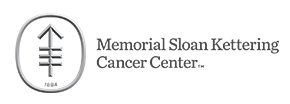Beta-Glucan and Monoclonal Antibody 3F8 in Treating Patients With Metastatic Neuroblastoma
| Status: | Active, not recruiting |
|---|---|
| Conditions: | Brain Cancer |
| Therapuetic Areas: | Oncology |
| Healthy: | No |
| Age Range: | Any - 120 |
| Updated: | 2/28/2019 |
| Start Date: | August 2005 |
| End Date: | August 2020 |
Phase I Study of Oral Yeast β-Glucan and Intravenous Anti-GD2 Monoclonal Antibody 3F8 Among Patients With Metastatic Neuroblastoma
RATIONALE: Beta-glucan may stimulate the immune system and stop tumor cells from growing.
Monoclonal antibodies, such as 3F8, can block tumor growth in different ways. Some block the
ability of tumor cells to grow and spread. Others find tumor cells and help kill them or
carry tumor-killing substances to them. Giving beta-glucan together with monoclonal antibody
3F8 may kill more tumor cells.
PURPOSE: This phase I trial is studying the side effects and best dose of beta-glucan when
given together with monoclonal antibody 3F8 in treating patients with metastatic
neuroblastoma.
Monoclonal antibodies, such as 3F8, can block tumor growth in different ways. Some block the
ability of tumor cells to grow and spread. Others find tumor cells and help kill them or
carry tumor-killing substances to them. Giving beta-glucan together with monoclonal antibody
3F8 may kill more tumor cells.
PURPOSE: This phase I trial is studying the side effects and best dose of beta-glucan when
given together with monoclonal antibody 3F8 in treating patients with metastatic
neuroblastoma.
OBJECTIVES:
Primary
- Determine the clinical toxicity of beta-glucan in combination with monoclonal antibody
3F8 in patients with metastatic neuroblastoma.
- Evaluate the biologic effects of this regimen in these patients.
OUTLINE: This is a dose-escalation study of beta-glucan.
Patients receive oral beta-glucan once daily on days -4 to 12 and monoclonal antibody 3F8 IV
over 30-90 minutes on days 1-5 and 8-12. Treatment repeats every 4 weeks for up to 4 courses
in the absence of disease progression or unacceptable toxicity and with a human antimouse
antibody (HAMA) titer < 1,000 U/mL.
Cohorts of 3-6 patients receive escalating doses of beta-glucan until the maximum tolerated
dose (MTD) is determined. The MTD is defined as the dose preceding that at which 2 of 3 or 2
of 6 patients experience dose-limiting toxicity.
Patients undergo urine, bone marrow, and blood sample collection periodically for biological
studies. Samples are analyzed for antibody-dependent cellular cytotoxicity,
complement-mediated cytotoxicity, and serum HAMA response via immunohistochemistry.
After completion of study treatment, patients are followed periodically.
Primary
- Determine the clinical toxicity of beta-glucan in combination with monoclonal antibody
3F8 in patients with metastatic neuroblastoma.
- Evaluate the biologic effects of this regimen in these patients.
OUTLINE: This is a dose-escalation study of beta-glucan.
Patients receive oral beta-glucan once daily on days -4 to 12 and monoclonal antibody 3F8 IV
over 30-90 minutes on days 1-5 and 8-12. Treatment repeats every 4 weeks for up to 4 courses
in the absence of disease progression or unacceptable toxicity and with a human antimouse
antibody (HAMA) titer < 1,000 U/mL.
Cohorts of 3-6 patients receive escalating doses of beta-glucan until the maximum tolerated
dose (MTD) is determined. The MTD is defined as the dose preceding that at which 2 of 3 or 2
of 6 patients experience dose-limiting toxicity.
Patients undergo urine, bone marrow, and blood sample collection periodically for biological
studies. Samples are analyzed for antibody-dependent cellular cytotoxicity,
complement-mediated cytotoxicity, and serum HAMA response via immunohistochemistry.
After completion of study treatment, patients are followed periodically.
DISEASE CHARACTERISTICS:
- Diagnosis of neuroblastoma by 1 of the following methods:
- Histopathology
- Bone marrow involvement AND elevated urinary catecholamines
- High-risk disease, defined by 1 of the following:
- Stage 4 disease with MYCN amplification (any age) or without MYCN amplification
(> 18 months of age)
- MYCN-amplified stage 3 disease (unresectable and any age)
- MYCN-amplified stage 4S disease
- Metastatic disease
- Tumor progression or persistent disease (at metastatic or primary site) after
intensive conventional chemotherapy
- Must have evaluable (microscopic marrow metastasis, elevated tumor markers, positive
MIBG or PET scans) or measurable (CT scan or MRI) disease documented after completion
of prior systemic therapy
PATIENT CHARACTERISTICS:
- Platelet count > 25,000/mm^3
- ANC > 500/mm^3
- Not pregnant or nursing
- Negative pregnancy test
- Fertile patients must use effective contraception
- No history of allergy to mouse proteins, beta-glucan, mushrooms, or yeast
- No active life-threatening infections
- No severe major organ toxicity
- Concurrent toxicity must be ≤ grade 2 except for the following, which may be
grade 3:
- Myelosuppression
- Hearing loss
- Alopecia
- Anorexia
- Nausea
- Hyperbilirubinemia from TPN
- Anxiety
- Hypomagnesemia
- No prior HAMA titer > 1,000 U/mL by ELISA
PRIOR CONCURRENT THERAPY:
- No concurrent supplemental beta-glucan in food (e.g., bran cereals or mushrooms) or as
complementary medicine
- No other concurrent systemic anticancer medications (e.g., hormonal agents,
chemotherapy, investigational agents, or immunotherapy)
- Concurrent isotretinoin allowed after the second course of study treatment is
completed or if the patient develops human antimouse antibody (HAMA)
We found this trial at
1
site
Memorial Sloan Kettering Cancer Center Memorial Sloan Kettering Cancer Center — the world's oldest and...
Click here to add this to my saved trials
